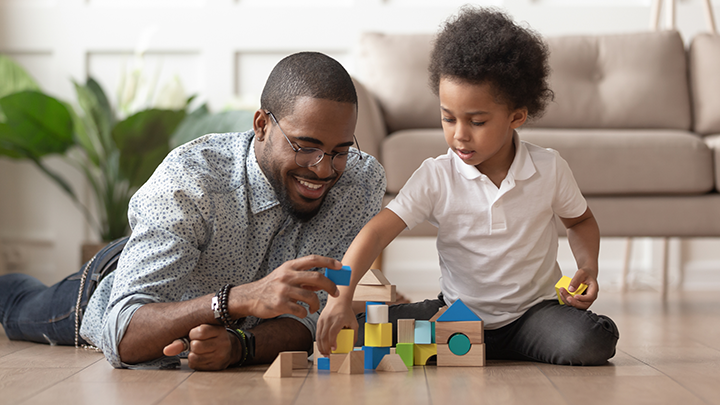
March 24, 2020
Welcome to Healthy Together, your guide to family and home life during COVID-19. Read the archive.

Wake up times, bedtimes, meals and snacks, play, walks and quiet time are all examples of what you can weave into your family’s new routine.
What do you call a dinosaur that is sleeping?
A dino-snore!
What is fast, loud and crunchy?
A rocket chip!
What has ears but cannot hear?
A cornfield.
What did the left eye say to the right eye?
Between us, something smells!
What do you get when you cross a vampire and a snowman?
Frost bite!
Jokes from Red Tricycle.
What do you call a duck that gets all A’s?
A wise quacker.
Why did the man get fired from the orange juice factory?
Lack of concentration.
What did the horse say after it tripped?
“Help! I’ve fallen and I can’t giddyup!”
Jokes from Fatherly.
Life in Alberta has been turned upside down with the COVID-19 outbreak. Home has always been where the heart is. Now it’s where we spend more and more time, working, learning, playing, eating and wondering when things will get back to normal.
With the answer unclear, your family may need to find a new normal for the coming weeks. These tips can help with day-to-day life. For information about COVID-19, visit Information for Albertans.
Schools, daycares, rec centres, many public facilities and businesses are closing. Work life is changing by the minute. Countless moms and dads are juggling to keep up and keep their children safe. Nearly every family in Alberta has had their daily routine disrupted.
Planning and following a new routine can lend a sense of order to these topsy-turvy times, especially for children.
“Routines can help you and children feel more comfortable during times of uncertainty,” says Farah Bandali, AHS’s director of Healthy Children and Families with Healthy Living. “Day-to-day routines add structure to family life and reflect what’s important to your family. They’re also a way to let your kids know what to expect during the day.”
She adds: “Your family can make new routines for weekdays and weekends together. See what works for everyone. Be flexible—give and take a little and let everyone have a voice. You can change things around as you need. And you don’t have to follow routines to the minute.”
Wake up times, bedtimes, meals and snacks, play, walks and quiet time. All are examples of what you can weave into your family’s new routine. See the sample routine below to help you get started.
Watch a funny movie. Tell a corny joke (see child-friendly example in sidebar). Have a staring contest. Tickle one another. Tell a goofy story.
Make laughter a part of your day.
Science America says “laughter and appreciation of humour are vital components of adaptive social, emotional and cognitive function … Laughter is, after all, a communal activity which promotes bonding, diffuses potential conflict and eases stress and anxiety.”
That’s a schmancy way of saying laughter brings people together and helps us think. It also helps us express our feelings, can turn a tense moment into a light moment and is just plain good for us.
In tough times, we can lose track of the basics of healthy living. Here’s a friendly reminder: eat healthy foods as much as possible. Stay connected with other family members, friends and co-workers while maintaining social (physical) distancing. Get a good night’s sleep. Go outside for a walk or kick a soccer ball around in your backyard or stomp around in the snow. Limit alcohol and recreational drugs.
Most of all, reach out for help if you need it. Alberta Health Services, the Government of Alberta, your local municipality and hundreds of community groups have all kinds of support and assistance for Albertans.
These are extraordinary times and looking after yourself and your family are more important than ever.
| Time | Activity | Description |
|---|---|---|
| Before 9:00 a.m. | Wake up & get ready |
|
| 9:00 - 10:00 a.m. | Learning |
|
| 10:00 - 10:30 a.m. | Snack & activity break |
|
| 10:30 a.m. - 12:00 p.m. | Chores or meal prep |
|
| 12:00 - 1: 00 p.m. | Lunch & free time | |
| 1:00 - 1:30 p.m. | Quiet time |
|
| 1:30 - 3:30 p.m. | Learning |
|
| 3:30 - 4:15 p.m. | Snack & activity break | See above |
| 4:15 - 5:00 p.m. | Free time | |
| 5:00 - 6:00 p.m. | Dinner | You can plan and prepare meals together |
| 6:00 - bedtime | Free time |